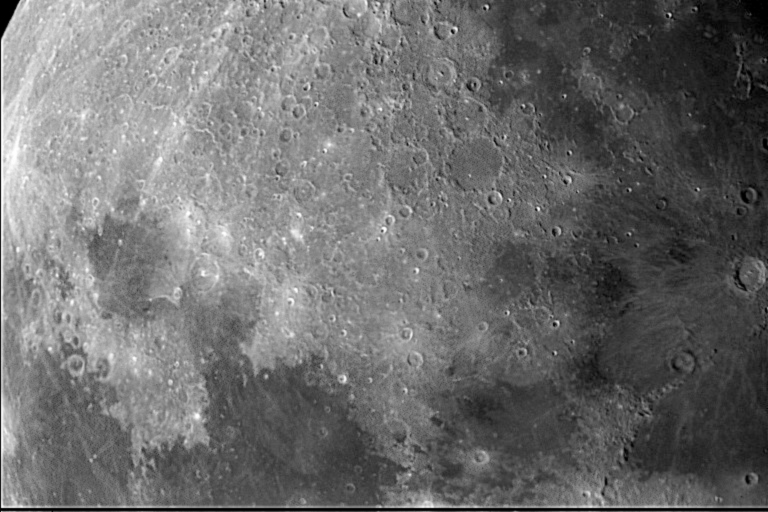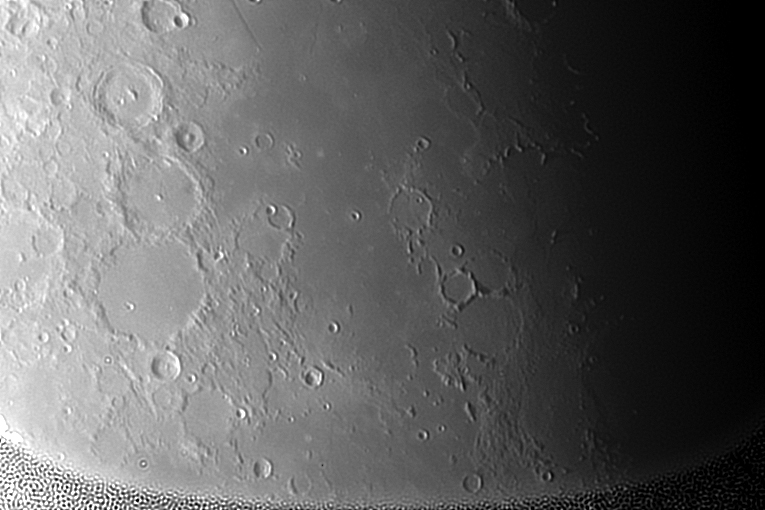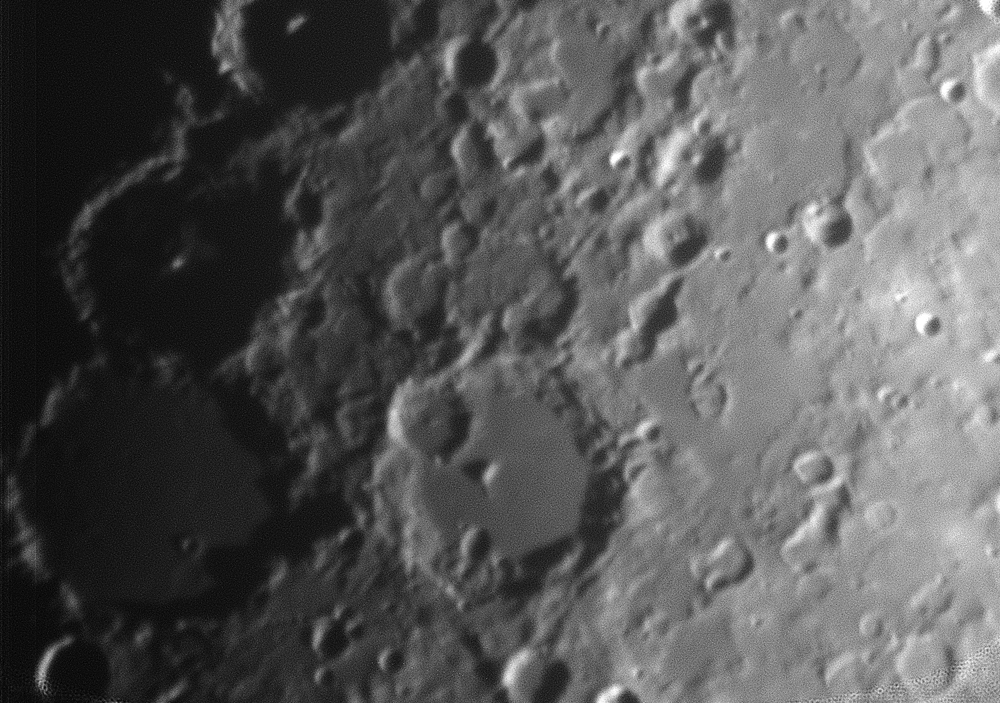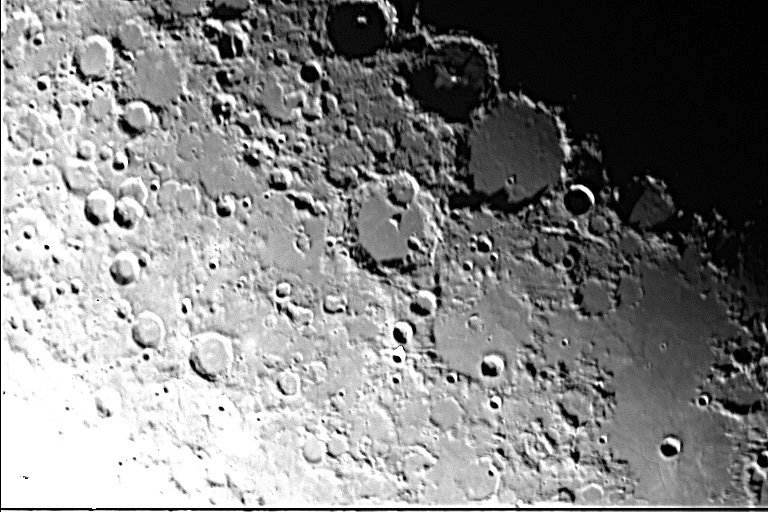
0.002 second exposure, Meade 416XTE CCD.
300mm f/6 newtonian at prime focus.

Situated near the centre of the Moon is a trio of large craters, Ptolemaeus, Alphonsus and Arzachel. Alphonsus was very much in the news during the early days of lunar exploration, as during the late 1950's and early 1960's it was thought that there was some internal activity there. In 1958, Russian astronomer Nikolai Kozyrev observed a series of whitish glows there and the spectra he obtained of them indicated that gases were being emitted. However, when the Ranger spacecraft crash-landed there in 1964, no evidence of volcanic activity was visible.
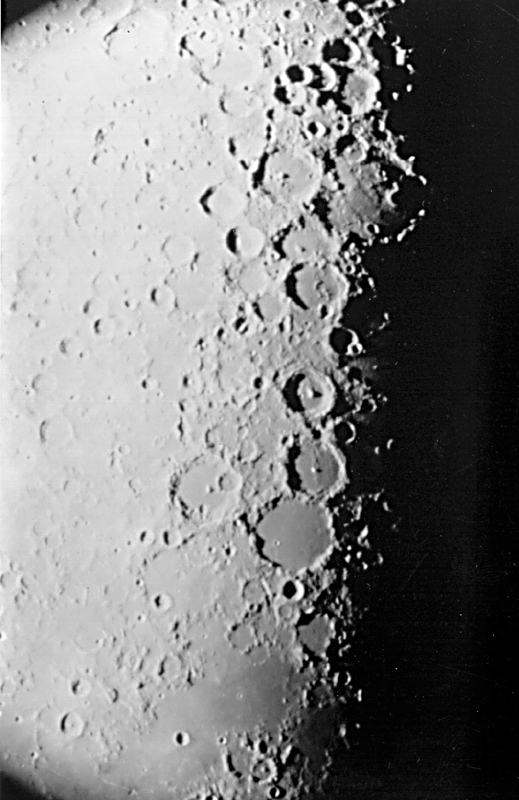
Alphonsus is the middle of the 3 large craters in the centre of the photograph. Its central peak is very prominent at this phase. To the south (above) is Arzachel, which has an even more prominent central peak. Ptolemaeus is the large, flat-floored crater to the north of Alphonsus. The small crater inside Ptolemaeus is Ammonius. Just north of Ptolemaeus is a small, deep crater. This is Herschel. To the east (left) of Ptolemaeus is another large, flat walled plain with a promient central peak and a sizable crater on one rim. This is Albategnius and the rim crater is Klein.
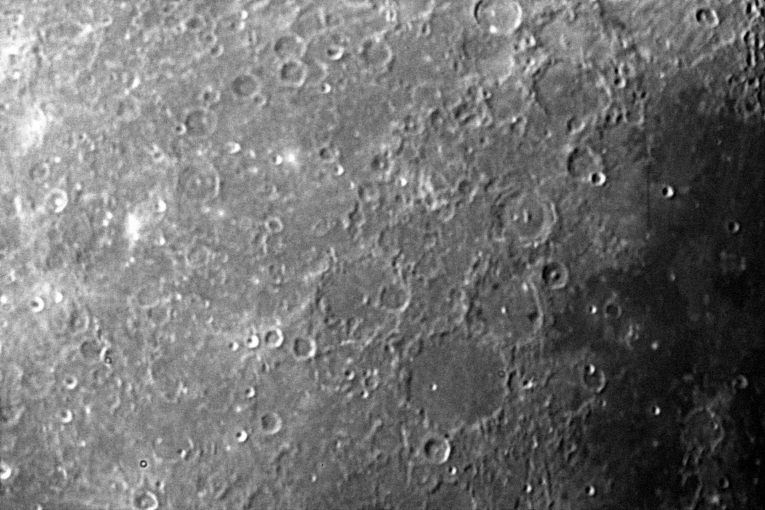
The best time to observe this region is when the Moon is around first or third quarter phase. Then long shadows highlight the relief spectacularly. In the above image, notice how the shadow of the central peak in Alphonsus reaches the rim of the crater nearly 60 km away!! As the Sun rises, the shadows shorten and the details are harder to discern as seen in the image below.
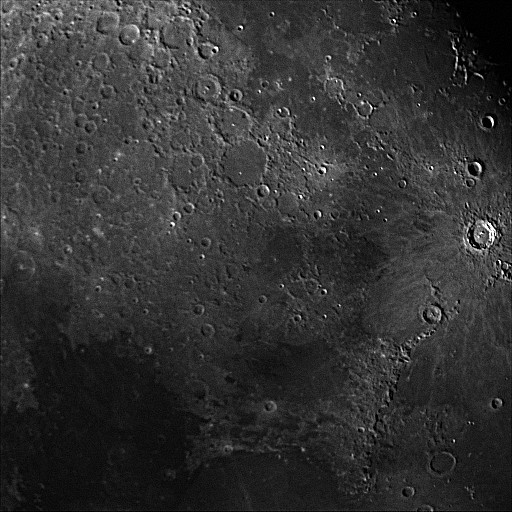
The region is not difficult to locate, as it is situated just a little south of the centre of the Moon. The image below shows a larger area of the moon. Alphonsus and Ptolemaeus are just above the centre of the image.
